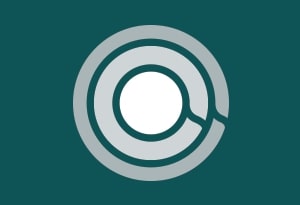Retail Banking : Demand Deposit Products
Retail Banking : Demand Deposit Products
Deposits can be divided into two types. The first type is time deposits in which an account holder gives the bank money for a fixed period of time and therefore does not have any right to ask for money before the maturity date has been reached. On the other hand, there are certain types of deposits that a bank holds for which there is no maturity date.
These are the types of deposits that can be withdrawn when required almost instantaneously. These deposits are called demand deposits and form a significant portion of the deposits that are held by a bank. Since these deposits are by definition unstable, the pose some very peculiar risks to the banks operations.
In this article, we will have a look at the various types of deposit products that are offered by banks to retail customers.
Checking Accounts
A checking account is an account that is used primarily for transaction purpose. This means that the bank is also aware that the funds that are stored in these accounts will not stay there for long and hence do not count on them as sources of funds that are required to make loans.
Checking accounts are called checking accounts because they allow account holders to have full check writing privileges. This means that account holders can write as many checks they need and no additional fees will be charged. However, account holders do not earn interest on the amount of money that they hold in a checking account. This is because banks cannot utilize these funds to earn an interest on them. Therefore, account holders have to pay the banks for the usage of such accounts since they are utilizing the depository as well as transaction services provided by the bank.
Checking accounts are maintained by individuals in order to pay their bills. The money kept in this account is usually the amount of money that is required for liquidity purposes and generating interest is not the primary objective.
Savings Accounts
In contrast to a checking account, a savings account is primarily maintained to save money. Therefore, the banks can be relatively certain that the amount of money in savings accounts form a relatively more stable source of funds. Of course, the funds can be withdrawn by the depositors in case they want to do so. However, most people do not withdraw their savings on a regular basis. Hence banks offer a relatively more attractive interest rate on these loans. Also, banks charge a wide variety of fees for withdrawal. The idea is to discourage people from withdrawing their cash for as long as possible.
Savings accounts generally have a limited check writing facility. This means that the banks limit the number of checks that can be written in a particular period. If the account holder crosses this threshold then they have to pay additional fee in order to write each check. Withdrawing from savings account therefore could prove to be a time consuming as well as costly affair.
Negotiable Order of Withdrawal (NOW)
A NOW account or a negotiable order of withdrawal is a type of account that was created with the primary intention of circumventing the regulation. The banking regulation in earlier periods prohibited payment of interest on demand deposits. However, other accounts like money market accounts did not face this restriction. As a result, banks were losing their business.
To overcome this problem the NOW account was created. The regulation stated that interest could not be paid on demand deposits but it could be paid on time deposits. Also, any deposit which had a maturity of longer than a week was considered to be a time deposit.
Banks created NOW accounts in such a way that they could theoretically ask for a 7 day notice from the account holder to withdraw funds if they wanted to. Hence they could term the deposits in a NOW account as time deposits and could therefore pay interest on the amounts deposited. However, in practice the banks never asked for any notice and the amount could be withdrawn instantaneously. Therefore NOW accounts are in effect savings accounts that offer a slightly higher interest rate.
Similar to saving accounts, NOW accounts offer a limited check writing privilege. Like savings accounts, if account holders decide to issue more than the allowed number of checks, it could soon turn into a costly affair.
Money Market Accounts
Money market accounts were created by banks in order to eliminate the competition being received from money market funds. Investors wanted the high return that money market funds had to offer. Therefore, banks started offering their own money market accounts which mimicked the returns generated by these funds. Also, banks provided additional liquidity. This is because banks allow account holders to write checks on their accounts and withdraw money without any transaction fees!
However, a higher minimum amount of funds need to be maintained in a money market account. The amount of money that banks hold under money market accounts is not legally considered to be demand deposits. Hence, banks do not have to maintain reserves for such accounts making it the darling of bankers as well.



/GettyImages-835807362-a12f1e53b2744999a030f15e684633eb.jpg)





